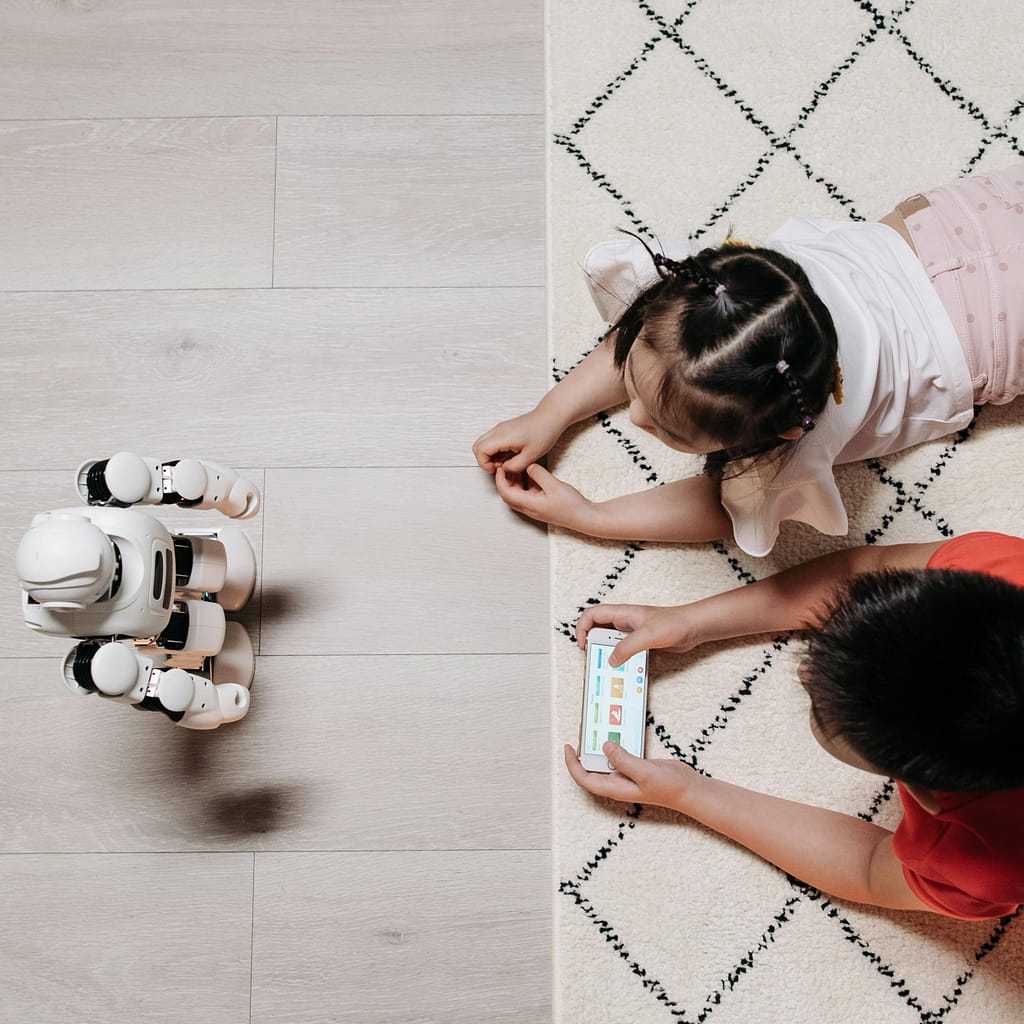Last Updated on October 25, 2024 by Tanya Janse van Rensburg
Kids learn best when technology supports them, boosting their basic skills like never before.
AI quietly transforms how math is taught, delivering dynamic new tools that breathe fresh life into this vital subject.
Thanks to the arrival of AI-powered smart toys, kids' interaction with math is getting a bold makeover.
As AI sits beside kids in the learning process, the atmosphere shifts from boring to electric, resulting in a deeper, more sustainable connection to the subject matter.

Over the past decade, AI in education has seen significant growth, and it's no surprise why.
Artificial intelligence's capabilities allow it to personalize learning experiences for each student.
Unlike traditional teaching methods, which often take a one-size-fits-all approach, AI can tailor lessons based on a child's strengths and weaknesses.
For subjects like math, where many children face challenges, this level of customization is particularly beneficial.
A simple example: a child does not understand the principle of working with a specific type of equation.
He can get a step-by-step solution using Math Solver AI Homework Helper.
When he sees the principle of solving a problem, he can find his mistakes and fill the gap in his knowledge.
A 2023 report by EdTech Trends revealed that 65% of educators believe AI tools will become central to elementary education by 2030.
This surge is primarily driven by AI's potential to address learning gaps and improve academic performance, particularly in math.

Suddenly, educational toys just got much smarter, and learning is about to be much more fun.
For kids, the magic happens when fun and learning collide, something these toys masterfully pull off, leaving traditional textbooks in the dust.
Armed with real-time data from built-in sensors and speech recognition, these intelligent toys continuously adjust their lesson plans, instinctively knowing when to push a child further or offer extra support.
For example, some smart toys for math might ask a child a series of math questions.
Depending on whether the child answers correctly, the toy can adjust the difficulty of the problems, providing hints or simplifying explanations if needed.
Imagine learning without the hassle of incorrect answers - these toys help kids breeze through tricky subjects with customized feedback.
One impressive trait of AI-infused toys is how they chronicle a kid's growth, bit by bit, as they play and learn.
How's your child doing?
Detailed reports provide a snapshot of their progress, highlighting strengths and areas that need extra attention from parents and educators.
With data guiding the way, we can step in quickly and provide kids with the additional help they need to stay on track in math.

The primary benefit of teaching math through AI is personalization.
AI learning tools for kids ensure that no two students have the same experience.
While one child might need more help with multiplication, another might struggle with fractions.
AI can detect these nuances and adapt accordingly, ensuring that both students receive the support they need without feeling overwhelmed or bored.
Moreover, smart toys incorporating AI are often gamified, making learning feel more like playtime than study time.
A 2021 study published in the Learning Science Journal showed that gamification can increase engagement by up to 90%.
Children are naturally drawn to games, and when math is presented in a game-like format, they are more likely to stay focused and retain the information.
Another advantage is the immediate feedback loop.
Traditional learning methods rely on homework or exams to assess progress, but AI-powered toys provide instant feedback.
A child doesn’t have to wait for a teacher to correct their mistakes; the toy will immediately notify them of errors, offer encouragement, and suggest solutions.
This not only speeds up the learning process but also builds confidence.

The impact of AI on children's math learning is measurable.
A study by FutureEd, published in 2022, found that students using AI-powered educational tools improved their math skills by 23% compared to their peers who used traditional learning methods.
Additionally, schools that integrated AI tools into their curriculum reported a 30% decrease in math-related anxiety among students aged 6-10.
Parents, too, are embracing this technology.
A survey conducted by AI in Education Review in 2023 found that 58% of parents with children aged 5-12 had purchased an AI-powered educational toy, citing enhanced learning outcomes as a primary motivator.
Despite the many benefits of AI in math education, there are challenges that educators and parents must consider. One concern is the cost.
Many families are priced out of AI-powered educational toys, a financial hurdle that can be tough to overcome.
We're facing a trap where gadgets and gizmos take center stage, pushing human connection to the side.
No matter how sophisticated the tools are, they're no substitute for the human element - the listening ear, the words of encouragement, and the gentle nudge from teachers and parents that help kids grow and thrive.
Data protection raises its head here, too.
Because toys nowadays are experts at gathering intel on our kids' learning styles, moms and dads are responsible for understanding where all that data goes.
Blind spots in data protection laws can prove catastrophic for companies and the people they serve, so strict compliance is the only way forward.

Picture this: A grade-schooler staring down a baffling math worksheet, feeling hopeless.
AI-driven learning tools are rewriting this scenario, putting personalized support at each student's fingertips.
Armed with the right tech tools and intelligent toys, children can navigate tricky math territories guided by a responsive, child-centered approach.
While hurdles persist, the advantages of teaching math with AI are simply too compelling to ignore - a true paradigm shift for the next generation of learners.
The education sector is experiencing a reboot in lockstep with rapid technological advancements.
Cue the arrival of game-changing digital resources that are rewriting the rules of engagement in the classroom.